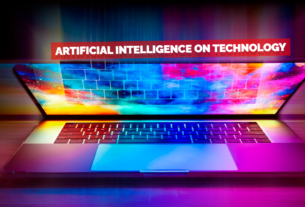The landscape of the workplace has undergone a profound transformation in recent years, driven by advancements in technology and a shift towards more flexible work arrangements. The digital workplace, once considered a concept of the future, is now a tangible reality shaping the way businesses operate.
In this article, we explore the trends and technologies at the forefront of this digital revolution, examining their impact on remote work, collaboration, and the overall employee experience.
1. Hybrid Work Models:
The traditional nine-to-five office routine is giving way to hybrid work models that blend in-office and remote work. This trend is facilitated by technologies that support seamless collaboration regardless of physical location. Video conferencing tools, project management platforms, and virtual collaboration spaces are becoming integral to maintaining connectivity and productivity in hybrid work environments.
2. Cloud-Based Collaboration Platforms:
Cloud-based collaboration platforms have become the backbone of the digital workplace. Tools like Microsoft Teams, Slack, and Google Workspace enable real-time collaboration, document sharing, and project management. The cloud not only centralizes data but also allows for easy access and collaboration from anywhere, fostering a more dynamic and flexible work environment.
3. Artificial Intelligence (AI) and Automation:
AI is playing a pivotal role in streamlining workflows and automating repetitive tasks. From intelligent chatbots handling routine inquiries to automated data analysis, AI enhances efficiency and allows employees to focus on higher-value, creative tasks. Automation tools are being integrated into various processes, reducing manual intervention and improving overall productivity.
4. Virtual Reality (VR) and Augmented Reality (AR):
The integration of VR and AR technologies is transforming how employees collaborate and learn remotely. Virtual meetings in immersive VR environments, augmented reality overlays for hands-on training, and virtual whiteboards are just a few examples of how these technologies are enhancing the virtual workplace experience.
5. Cybersecurity Measures:
As the digital workplace expands, so do cybersecurity concerns. Technologies such as multi-factor authentication, endpoint security, and secure communication channels are crucial for safeguarding sensitive data in remote work settings. With the rise of remote access and cloud-based solutions, ensuring robust cybersecurity measures is a top priority for organizations.
6. Employee Well-being Platforms:
Recognizing the importance of employee well-being, digital workplaces are incorporating platforms that focus on mental health, stress management, and overall wellness. These tools, often integrated with HR systems, provide resources and support to help employees maintain a healthy work-life balance.
7. Internet of Things (IoT) Integration:
IoT devices are being integrated into the digital workplace to enhance efficiency and gather valuable insights. Smart office technologies, such as connected sensors for space utilization and environmental controls, contribute to creating a more responsive and intelligent workplace.
8. Blockchain for Secure Transactions:
Blockchain technology is finding applications beyond cryptocurrencies in ensuring secure and transparent transactions in the digital workplace. From secure document sharing to verifying the authenticity of digital assets, blockchain is contributing to enhanced trust and security.
9. Flexible and Scalable Infrastructure:
Digital workplaces demand flexible and scalable infrastructure to accommodate changing work patterns and evolving technology needs. Cloud infrastructure and scalable software solutions allow organizations to adapt quickly to new requirements without the need for extensive physical upgrades.
10. Data Analytics for Informed Decision-Making:
Data analytics tools are empowering organizations to make informed decisions based on real-time insights. From analyzing employee performance metrics to understanding user engagement with digital tools, data analytics is becoming a cornerstone for strategic decision-making in the digital workplace.
Conclusion:
The digital workplace is no longer a distant vision but a dynamic and evolving reality. As trends and technologies continue to shape the future of remote work, businesses must embrace these changes to stay competitive and foster a work environment that prioritizes flexibility, collaboration, and innovation.
The digital workplace is not just about tools and technologies; it’s about creating an ecosystem that empowers employees to thrive in a rapidly evolving professional landscape. As we navigate this digital transformation, the key lies in adopting technologies that enhance connectivity, productivity, and the overall well-being of the workforce.



